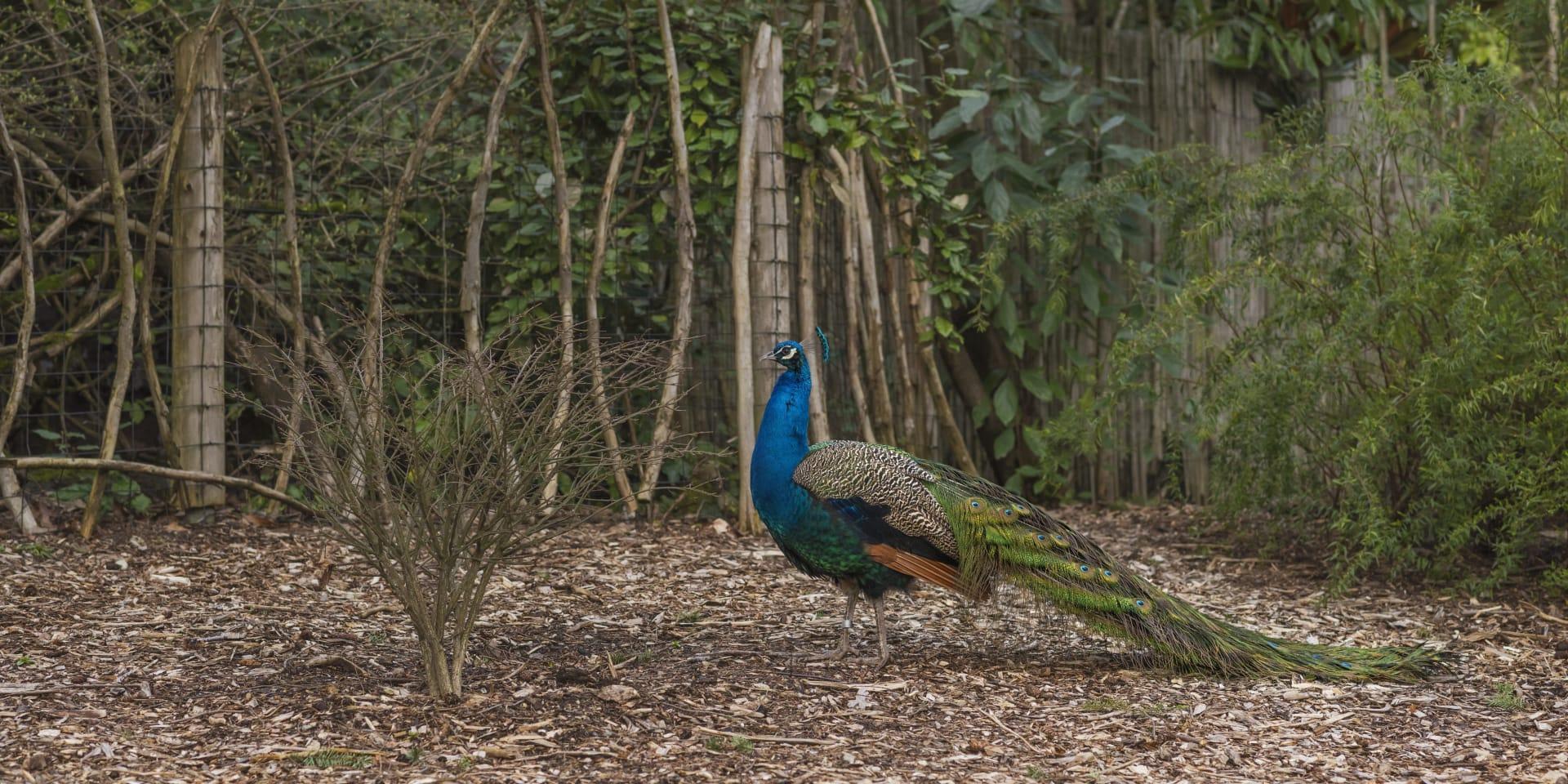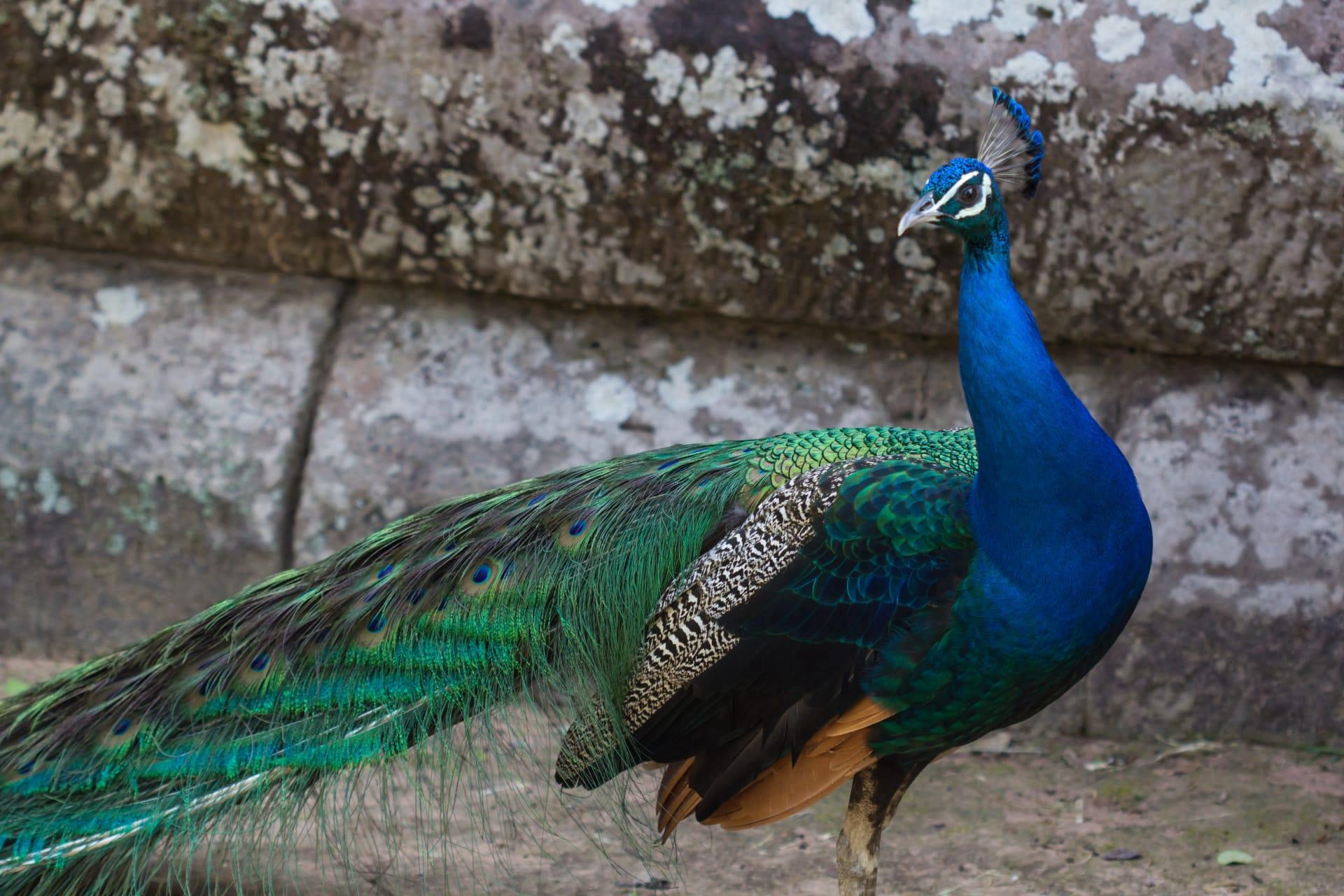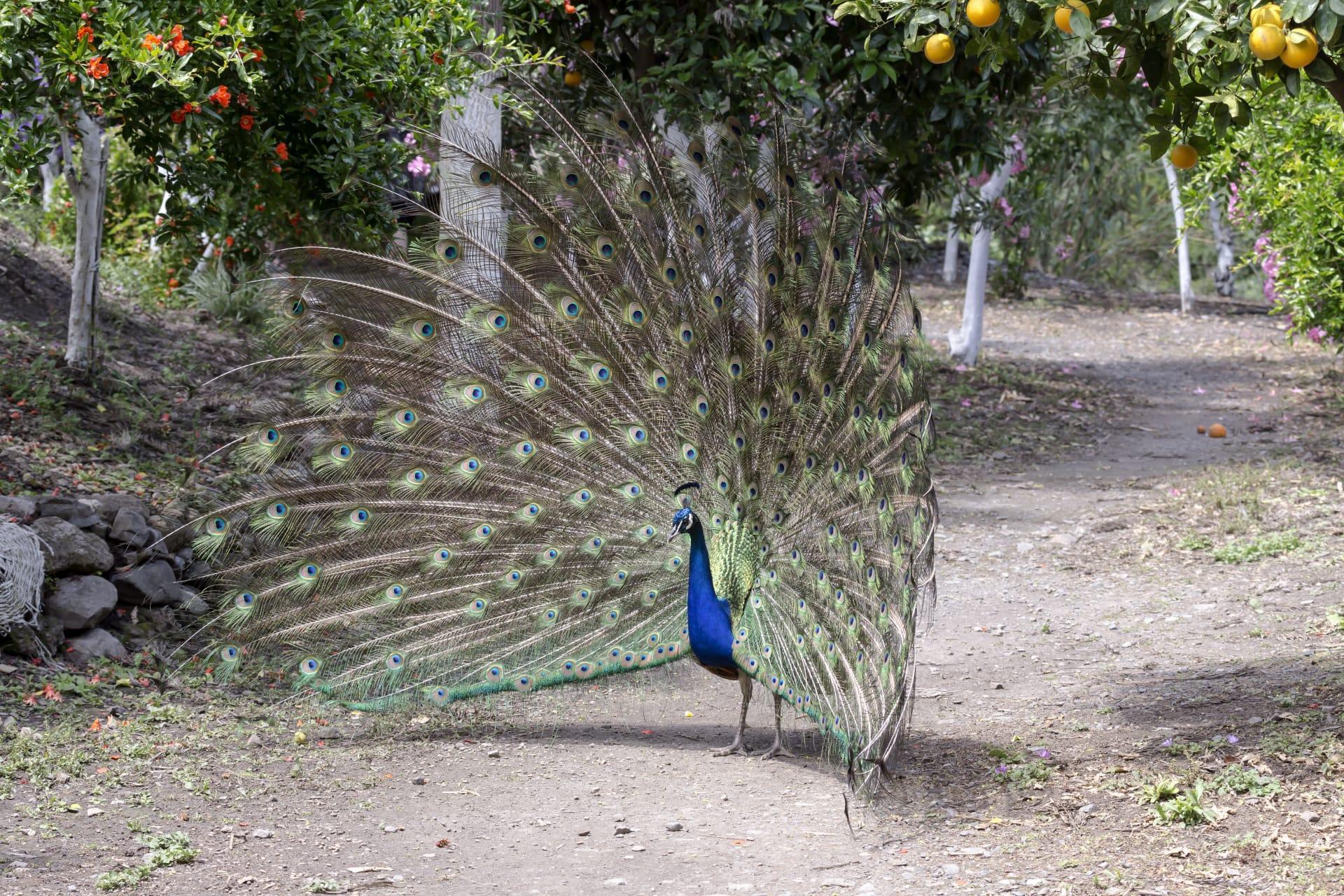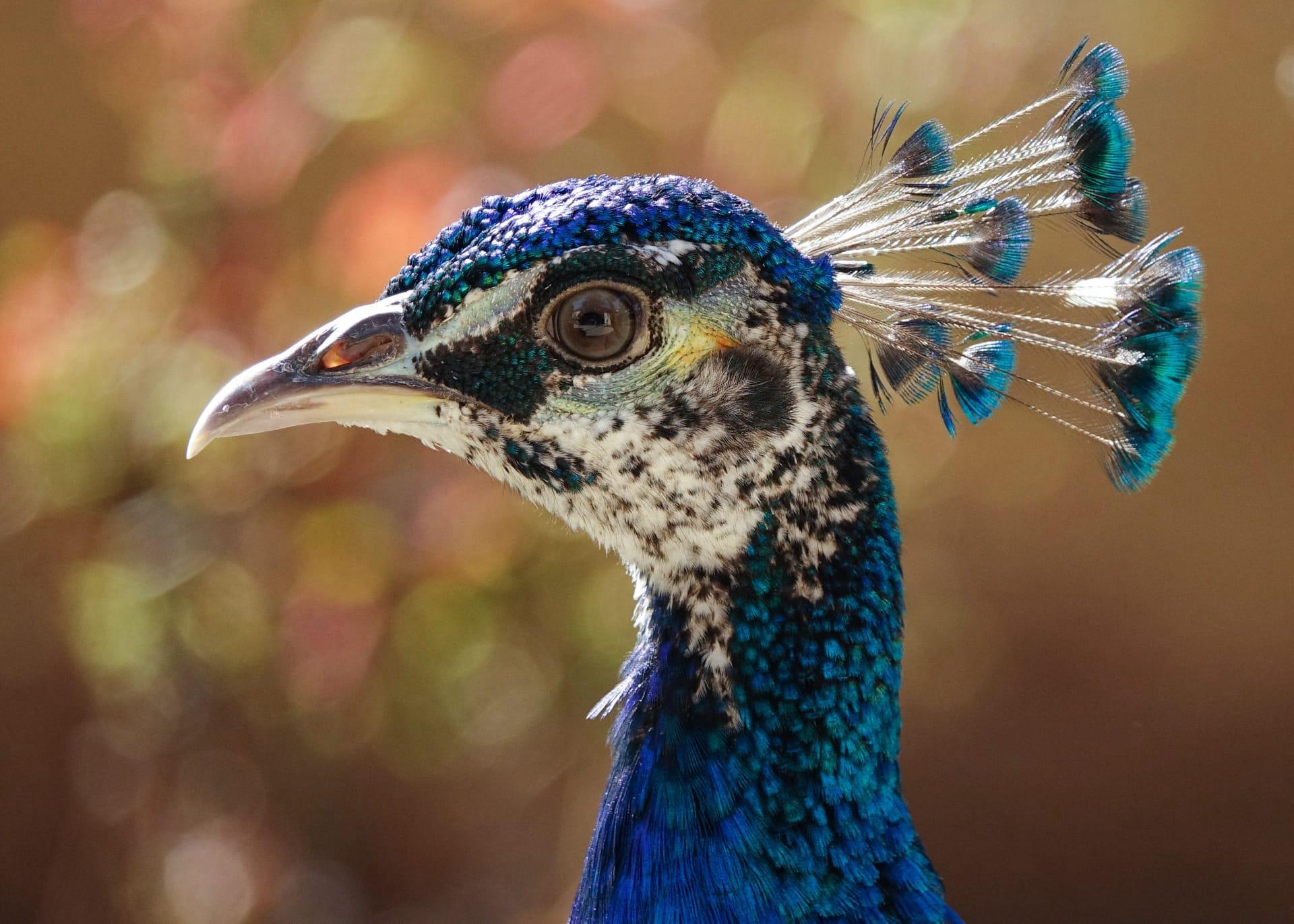Peacock Characteristics
- Home /
- Mini Encyclopedia /
- Animal /
- Peacock Characteristics
1
Peacocks, the flamboyant birds known for their vivid plumage, are part of the pheasant family. The males, specifically called peacocks, while the females are peahens, exhibit a striking size range, usually measuring from 90 to 230 centimeters in length. This measurement includes their famed tail or "train," which itself can be over 60% of their total body length. Adult peacocks weigh between 4 to 6 kilograms. Their lifespan, surprisingly robust, averages around 15 to 20 years in the wild, and can extend up to 25 years in captivity.
The most distinguished organ of a peacock is undoubtedly its tail, technically termed a "train." This marvel of nature, consisting of 100 to 150 feathers, can fan out to create an eye-catching display spanning over 2 meters in width. Each feather, adorned with an iridescent "eye," vibrates to produce a rustling sound, an integral part of their mating ritual. This train isn't just for show; it's a critical tool in the peacock's survival playbook, used for attracting mates and deterring predators by creating a confusing spectacle.

2
Question: Why do peacocks have such colorful tails?
Answer: The primary reason for the peacock's colorful tail is mate attraction. During mating season, males display their vibrant train to woo potential mates. The size and vibrancy of these tails are a sign of the peacock's health and genetic quality. Biologists suggest that the more vibrant and elaborate a male's tail, the more attractive it is to females. This is part of a natural selection process known as sexual selection, where traits that are more appealing to potential mates are passed down through generations. The tail's iridescence is due to microscopic structures that reflect light, creating those mesmerizing colors.

3
Peacocks are not renowned for their speed or agility. They are ground-dwelling birds that prefer walking to flying. While they can fly over short distances, especially to escape predators or to roost, they are more likely to run when threatened. Their maximum running speed is about 16 kilometers per hour. Despite their bulky appearance, peacocks can execute a quick, short burst of flight, often reaching the lower branches of trees where they spend the night for safety.
As for feeding habits, peacocks are omnivores with a preference for small insects, worms, and small reptiles, alongside plant material like flower petals, seeds, and grains. Their diet is opportunistic, varying with the availability of food sources in their environment. They forage on the ground, using their strong beak to peck and pick food. The diversity in their diet is essential for providing the nutrients necessary to maintain their splendid plumage.

4
Peacocks are native to South Asia and parts of Africa, thriving in a variety of environments including forests, farmlands, and even areas with human habitation. They prefer warm climates and are commonly found in the undergrowth of rainforests and deciduous forests, where they can find ample food and shelter. The adaptability of peacocks to different habitats is a key factor in their survival.
In terms of reproduction, peacocks are polygamous, with the males courting several females during the mating season. The peacock's elaborate train plays a crucial role in courtship displays. After mating, the peahen lays a clutch of 4-8 eggs, which she incubates for about 28 days. The chicks are born well-developed, capable of walking and feeding themselves shortly after hatching, a trait known as precocial. The mother leads and protects the chicks until they are independent.

5
Book: "The Peacock's Tale" by Alison M. Bunting, published in the United States in 2010. This book delves into the fascinating world of peacocks, exploring their biology, behavior, and the symbolism attached to them across different cultures. Bunting, a renowned ornithologist, combines scientific insights with vivid storytelling, making the book an engaging read for both bird enthusiasts and general readers.
Book: "Peacock Revolution: The Story of a Bird's Role in Fashion" by Jonathan King, published in the United Kingdom in 2015. King's book focuses on the historical and cultural significance of peacocks, particularly their influence on fashion and art. The author, a cultural historian, presents an intriguing narrative that connects the natural beauty of peacocks with human artistic expression, tracing its impact from ancient times to modern-day fashion trends.